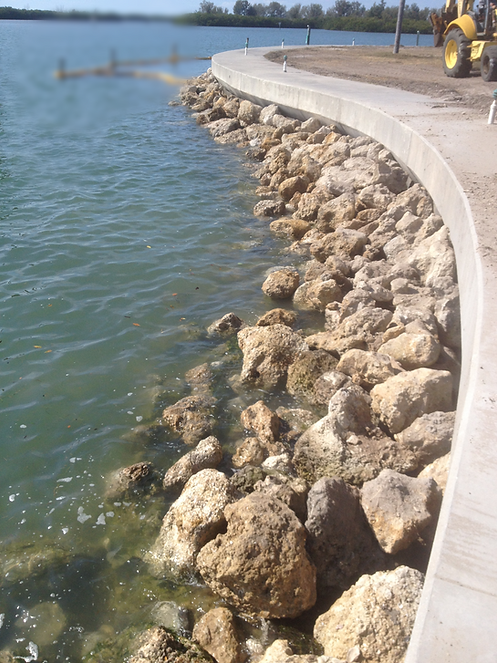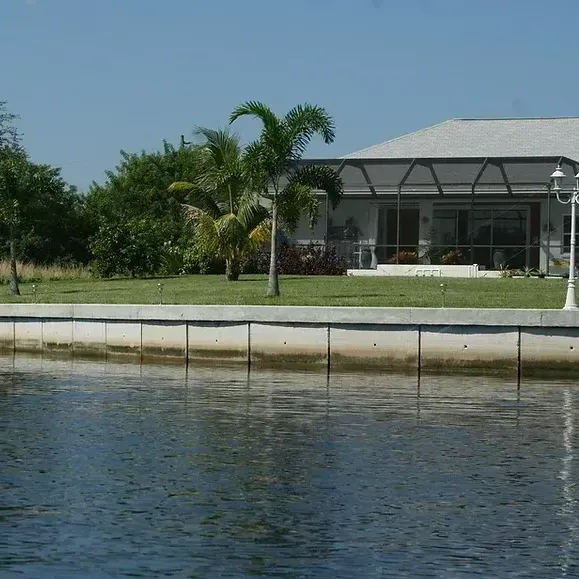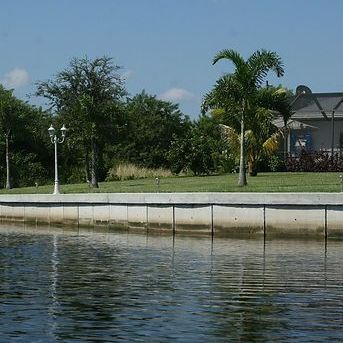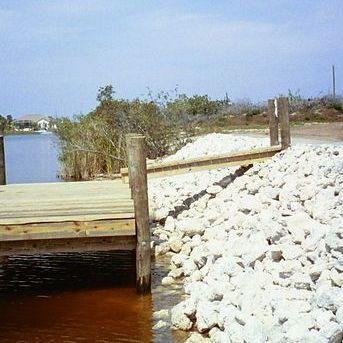Secure Your Shoreline With our Durable Seawalls
Charlotte County Seawalls - Port Charlotte, Florida
Contact us today for more information!


Seawalls
Seawalls are used for:
- Erosion Control
- Leveling of a Yard
- Increase in Property Size and Value
- Easier Access to Water
Listed below are the different types of vertical seawalls that we install:

Concrete Seawalls:
Concrete seawalls are the most common and durable. These slabs are precast and normally manufactured off site. The panels are normally 6 inches to 8 inches thick and have 5,000 psi concrete. A mat of rebar is used for each one. The engineered designs are followed to provide the strength needed for them to last.
After the installation of the seawall slabs, the cap and tiebacks are quite important. The cap can vary in size. The cap ties the slabs together and levels the seawall. The tie backs keep the wall from leaning out towards the water. All of the steel in the cap is protected from rusting by epoxy coating.

Vinyl Seawall Sheets:
Vinyl seawalls are used for areas where access is very tight or concrete is not an option. Cap can be aluminum, wood, or concrete. Steel sheet piling are used in areas where there is a large amount of the sheet height exposed or when certain sub soils require them.

Wooden Walls:
Wooden walls are used for freshwater or when a certain look is required.
There are three types of rip-rap seawalls:
The most common is the rip-rap on a man-made canal. This should be done on a two-to-one slope. A toe should be dug into the canal one to two feet below the mean low tide. Filter cloth should be placed on the toe and brought up on the top of the filter cloth. When the cloth is brought up to the top of the wall, it will be buried or placed into a 6-inch thick by 18-inch wide reinforced concrete cap. This cloth will let the water in and out but will prevent soil erosion.
A larger rock should be used if a rock revetment is needed on open water. The filter cloth material should be placed on the ground with a toe dug. The rock should be heavy (1500 lbs to 4,000 lbs), depending on how much wave energy is to be controlled.
If a vertical wall is failing, we recommend the following:
A rip-rap may be placed before the existing seawall to stop this failure and fix the wall. Filter cloth should be placed on the wall below the cap, down to the ground, and out from the wall 6 to 8 feet. Rock should then be placed on a two-to-one slope from the canal back. This will turn the failing wall into a retaining wall, giving it many more years of usefulness.
Check our gallery if you want to view more of our work
